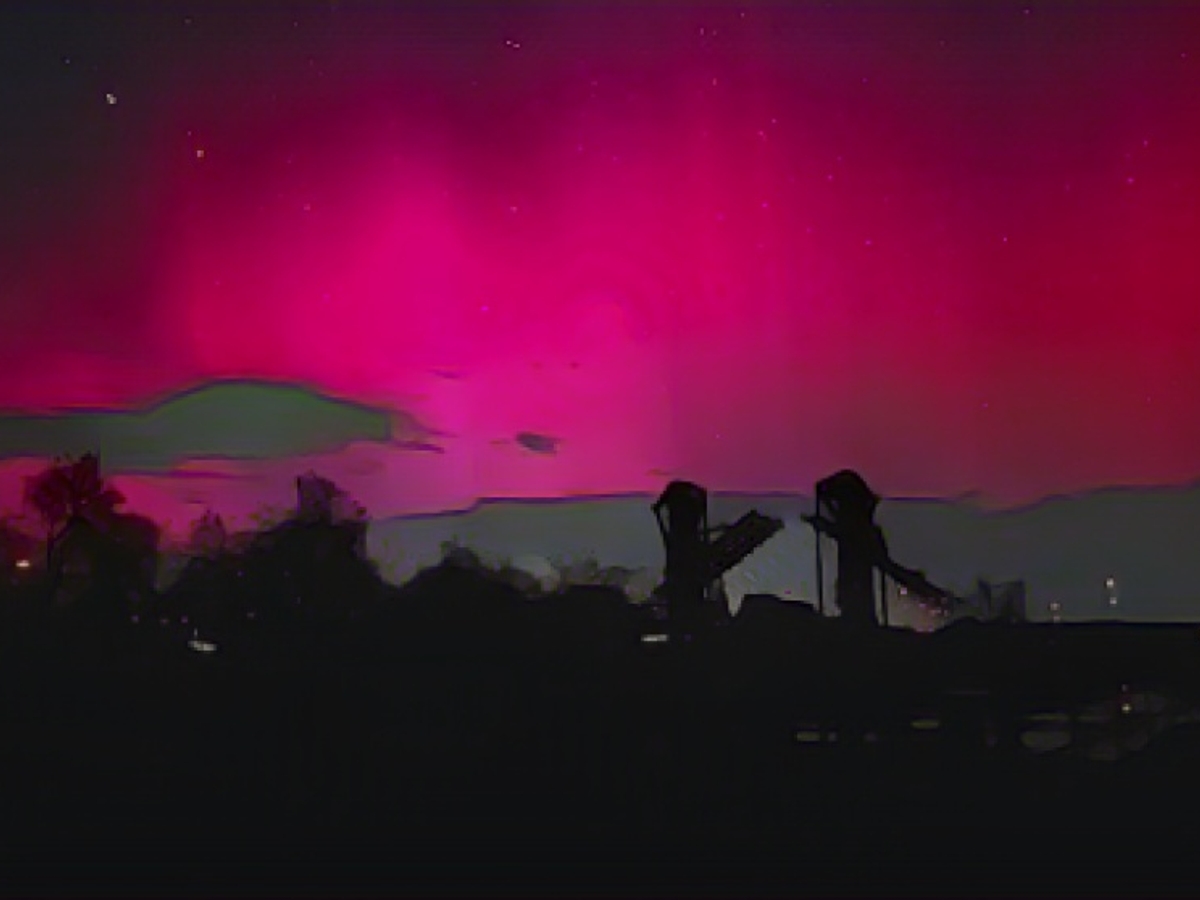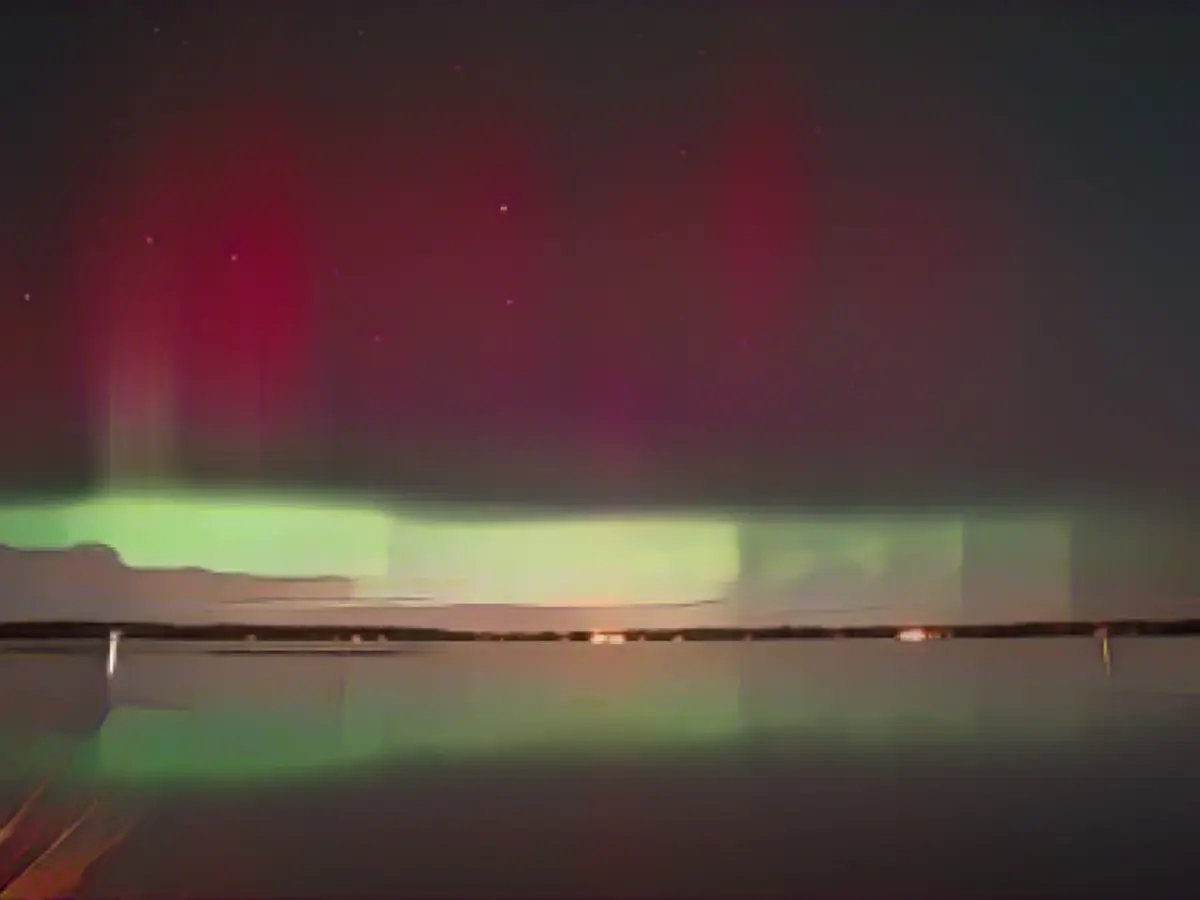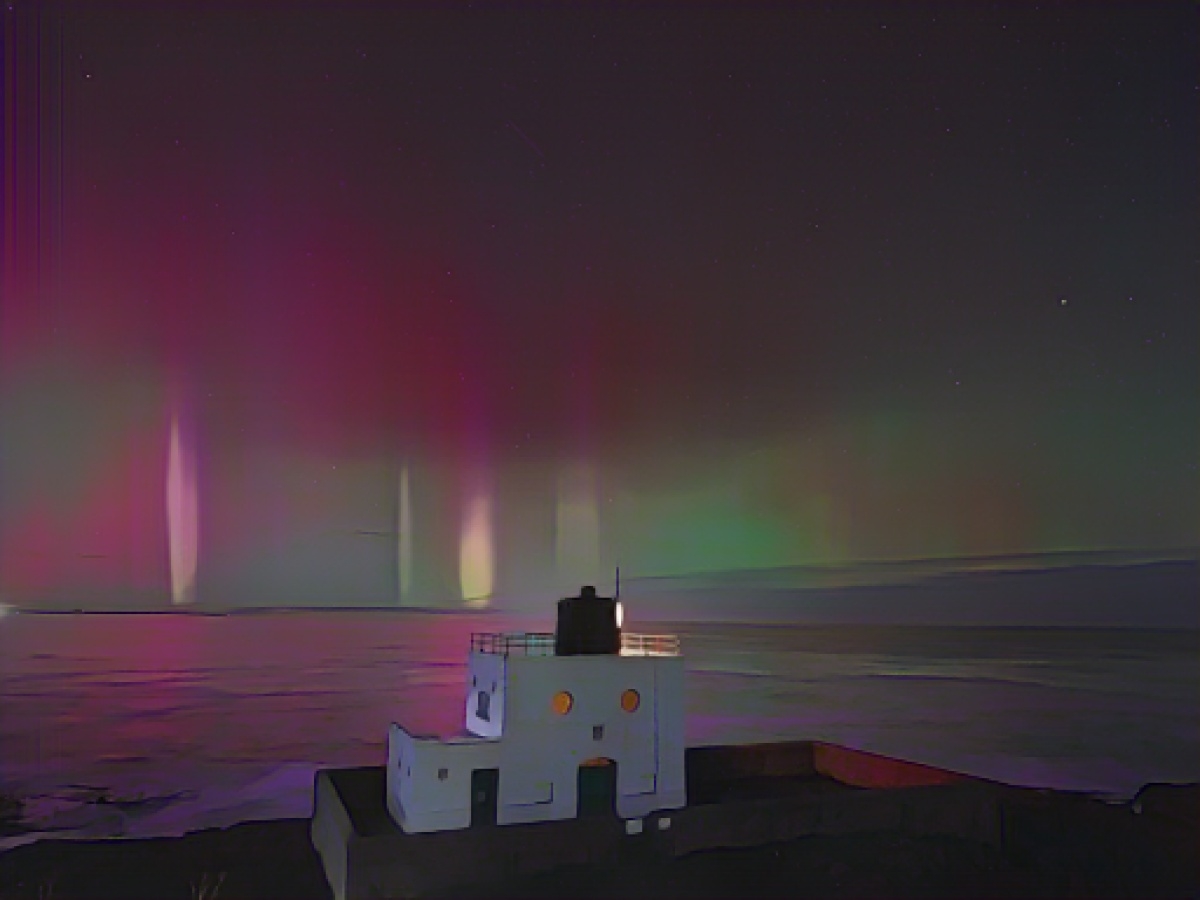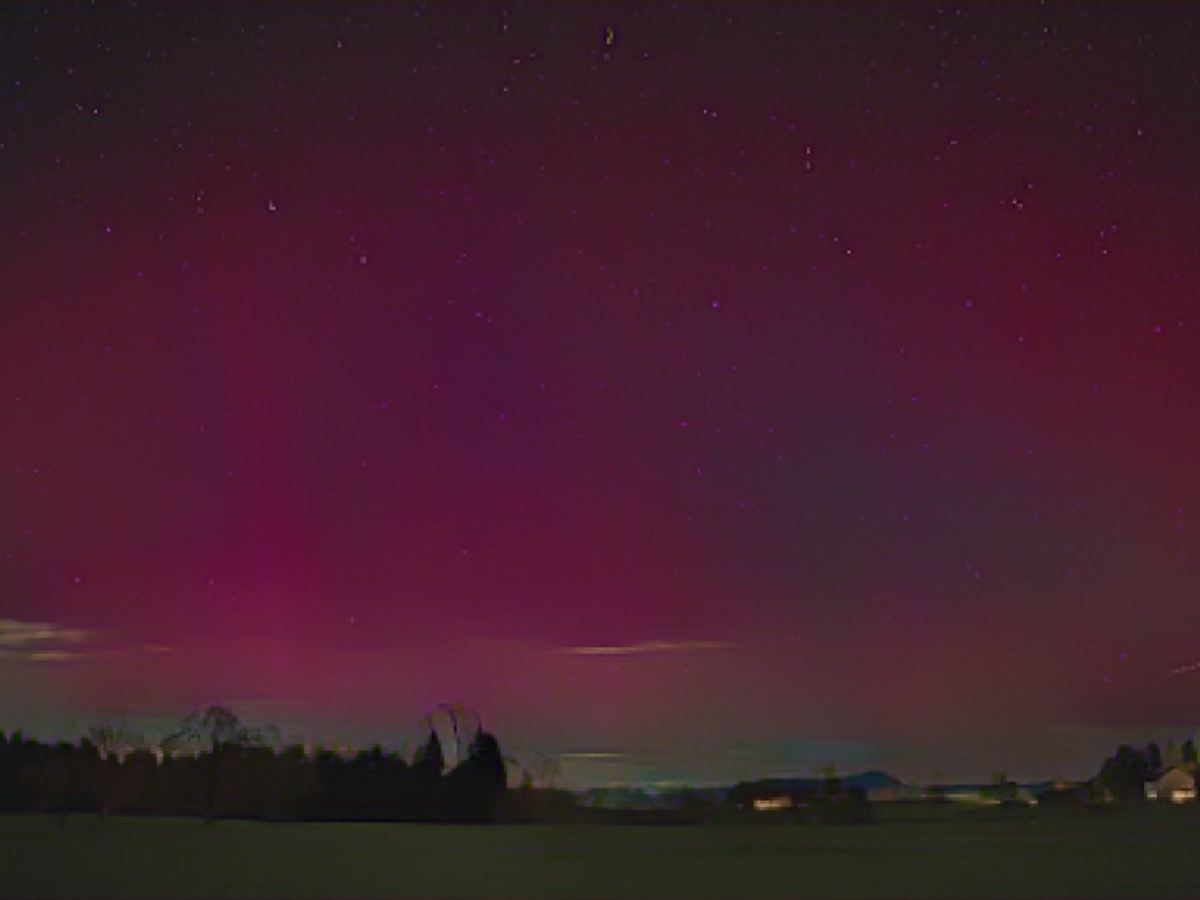Witnessing Northern Lights Over Central Germany
Citizens from Saxony, Bavaria, and Thuringia were privileged to capturing and sharing their awe-inspiring snaps of the ethereal display on social media. The enchanting sky was painted in splendid hues of green and red.
Though the view in Leipzig was partially veiled by thick cloud cover, dashes of green and purple still managed to pierce the heavens, creating a mesmerizing scene in contrast.
Usually, such celestial phenomena are widely associated with the Arctic Circle, where they're abundant and attract numerous tourists. Occasionally, we are blessed with this spectacle in Germany, although it's not as frequent as in the Arctic.
Reports of this captivating celestial spectacle also graced the headlines of numerous regional publications, such as Chemnitz regional news, dresden regional news, and Leipzig regional news. For Leipzig, the pink and green shimmer was slightly muted by the clouds, but it didn't dampen the fascination of the viewers. Thuringia regional news too took notice of this extraordinary event, sharing captivating images with their audience.
Source:
Ultra-Rare Evening in Central Germany
Several factors contribute to the scarcity of witnessing such a celestial delight in Central Germany.
- The Aurora Borealis is primarily triggered by surges of solar activity, or Solar Maximum, when the sun is teeming with sunspots. This phenomena can trigger more frequent and intense geomagnetic storms that amplify the aurora's visibility.
- Geomagnetic storms, caused by solar wind interacting with Earth's magnetosphere, can exacerbate the aurora's display, especially in areas far from the equator. However, these events are less frequent and less intense at lower latitudes such as Central Germany compared to the Arctic Circle.
- The aurora mainly appears near the Earth's polar regions and is known to occur within the Arctic Circle, where it's more frequent and intense. Central Germany is positioned far from the polar regions, making the aurora's appearance much less frequent and less intense.
- Light pollution also plays a significant role in the aurora's visibility. Urban environments like Central Germany typically have higher light pollution levels, which can hinder the observation of this celestial marvel. In contrast, the Arctic Circle is known for its profound darkness, offering superior viewing conditions.
Given these contributing factors, observing the Northern Lights in Central Germany is an exceptionally rare occurrence.







